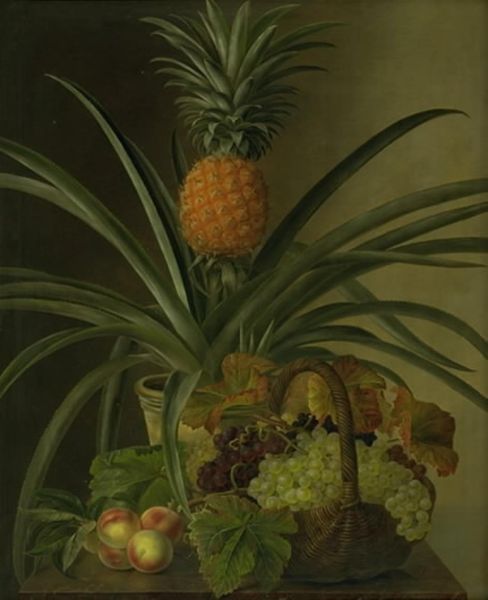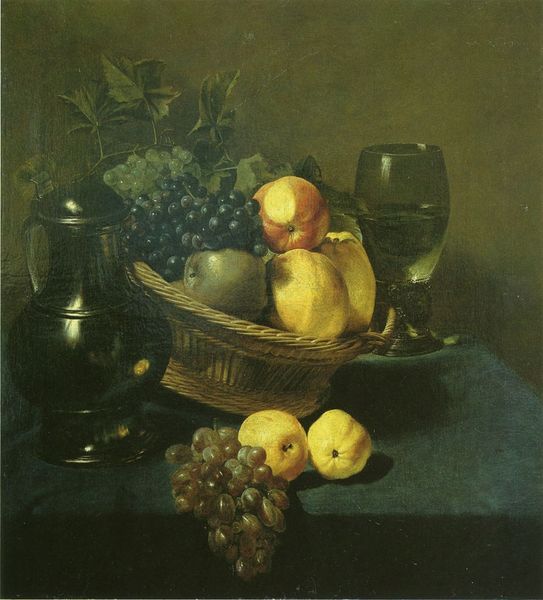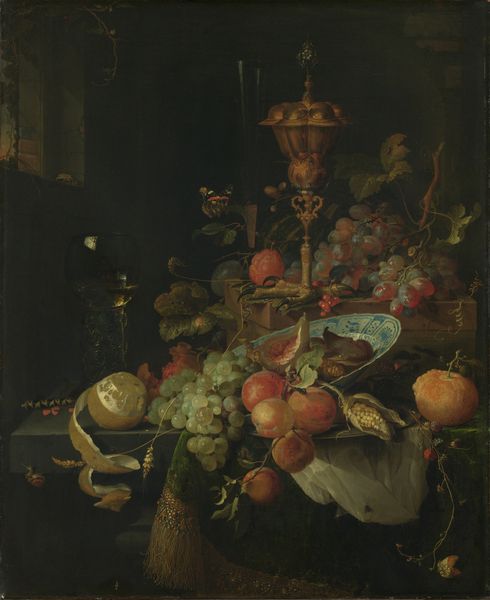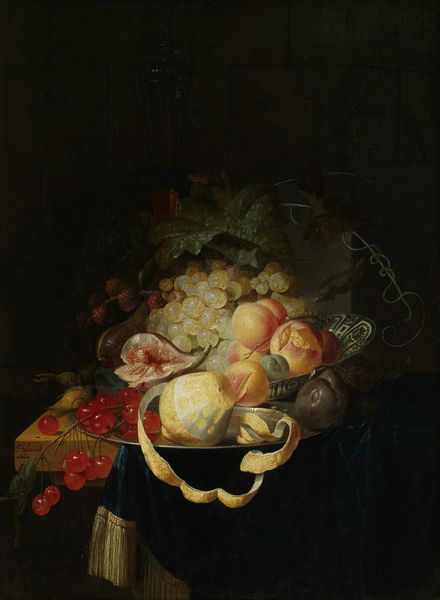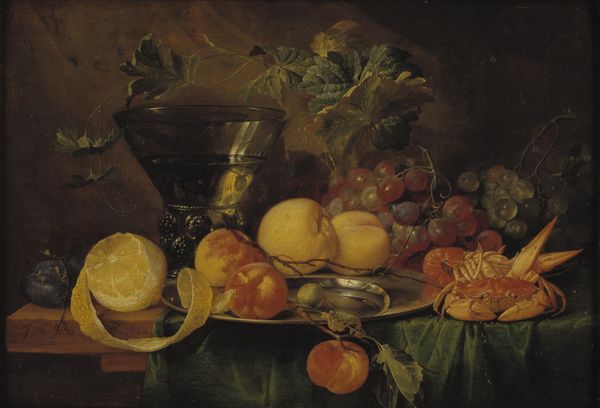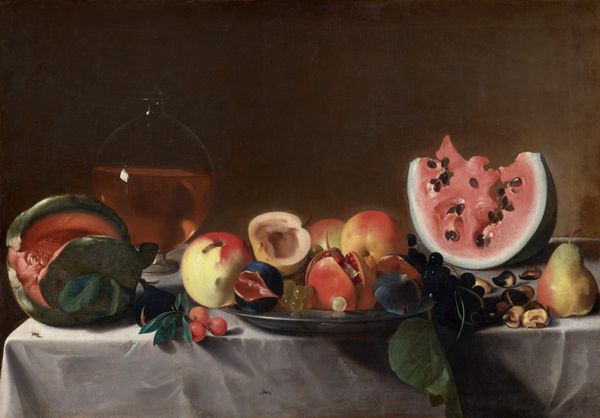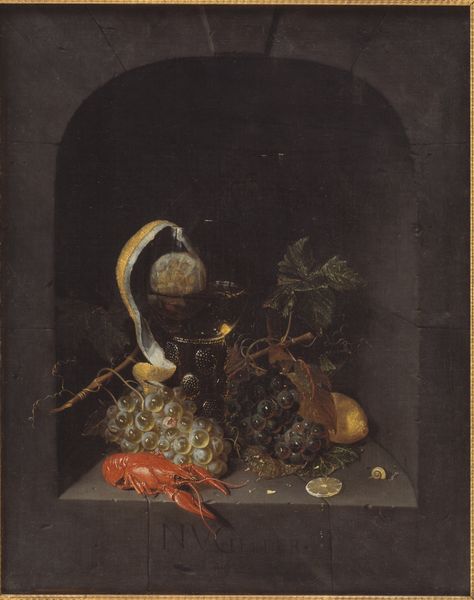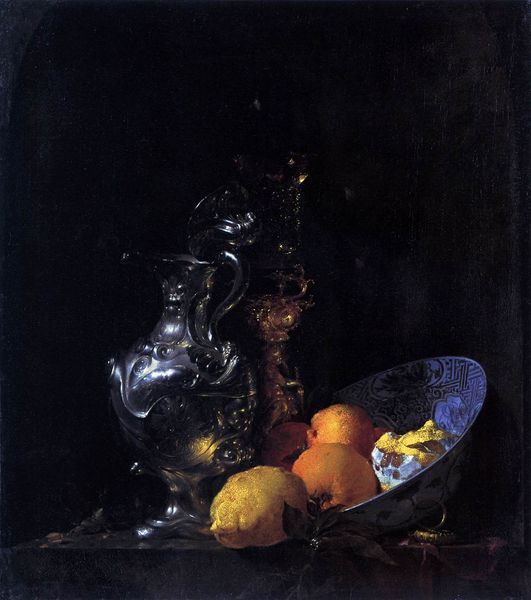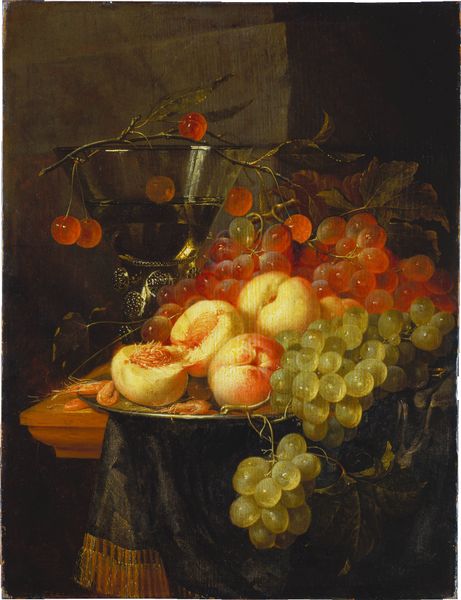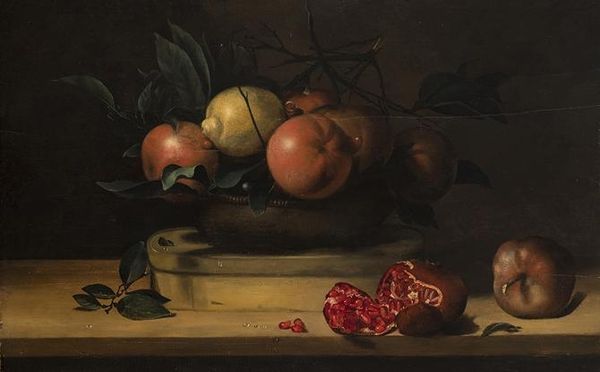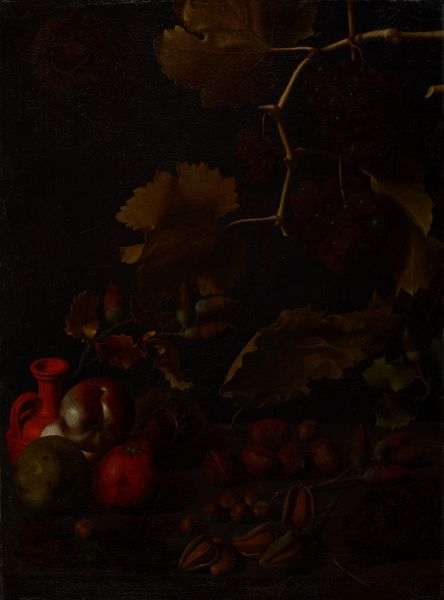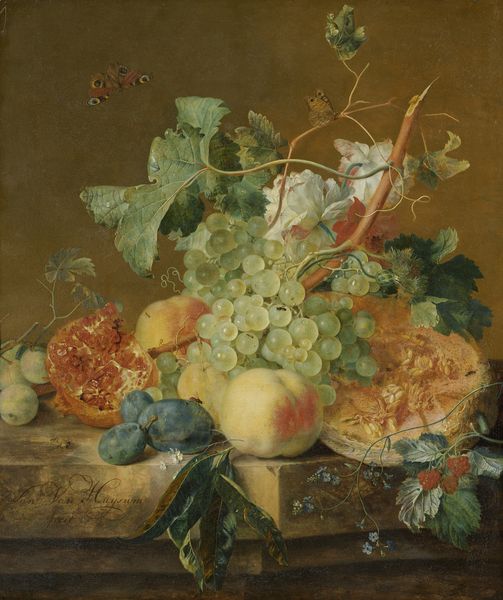
oil-paint, glass
#
baroque
#
oil-paint
#
glass
#
oil painting
#
realism
Dimensions: height 41.5 cm, width 34.5 cm, depth 5.5 cm
Copyright: Rijks Museum: Open Domain
Curator: Here we have "Still Life with Quinces, Medlars and a Glass," an oil painting executed sometime between 1669 and 1719 by Martinus Nellius. There's a certain austerity to it, wouldn’t you say? Editor: Indeed. My first impression is one of somber richness, almost melancholic. The arrangement of the fruit, the heavy shadows... it all speaks to a feeling of transience. The use of oil paints definitely lends to the sense of materiality; it's as though the objects themselves are pressing forward. How were these elements received in his time? Curator: Baroque paintings often play with dramatic lighting, or tenebrism. You can see it here creating almost theatrical shadows, that emphasizes the textures of the fruit, the roughness of the wood, and the translucence of the glass. And observe the way the artist balances color temperature, the ochre, amber and touches of garnet creates unity. The precise composition allows the viewer's eye to travel and absorb visual data gradually and carefully. Editor: Certainly. It speaks to the wider consumption habits. Someone meticulously placed this scene to reflect wealth, privilege, and a clear emphasis on the consumption of expensive materials and exotic items. How would it differ had an apprentice created the original groundwork? I would expect significant variation between the quality and intention. And how would such paintings adorn the spaces of everyday life? Curator: Precisely, that interplay between light and form generates meaning. Considering his artistic influences we can look at a lineage through Dutch still life painting, but Nellius is putting forward something intensely his own here. By isolating these few elements, emphasizing specific color and texture relations in play, this painting attains timeless qualities. Editor: Well put. I am struck by the clear sense of control within its fabrication. So deliberate, from sourcing materials, constructing the setting, and creating such vivid imagery to influence taste and style within elite consumption. These methods echo a much bigger political frame of hierarchy in manufacturing, distribution and even visibility within art production. Curator: The lasting effect resides precisely in the compositional strength of his art; the use of semiotic markers that speak volumes about humanity even today. Editor: And I think seeing that human trace in production processes, reveals an incredible connection to ourselves.
Comments
No comments
Be the first to comment and join the conversation on the ultimate creative platform.
